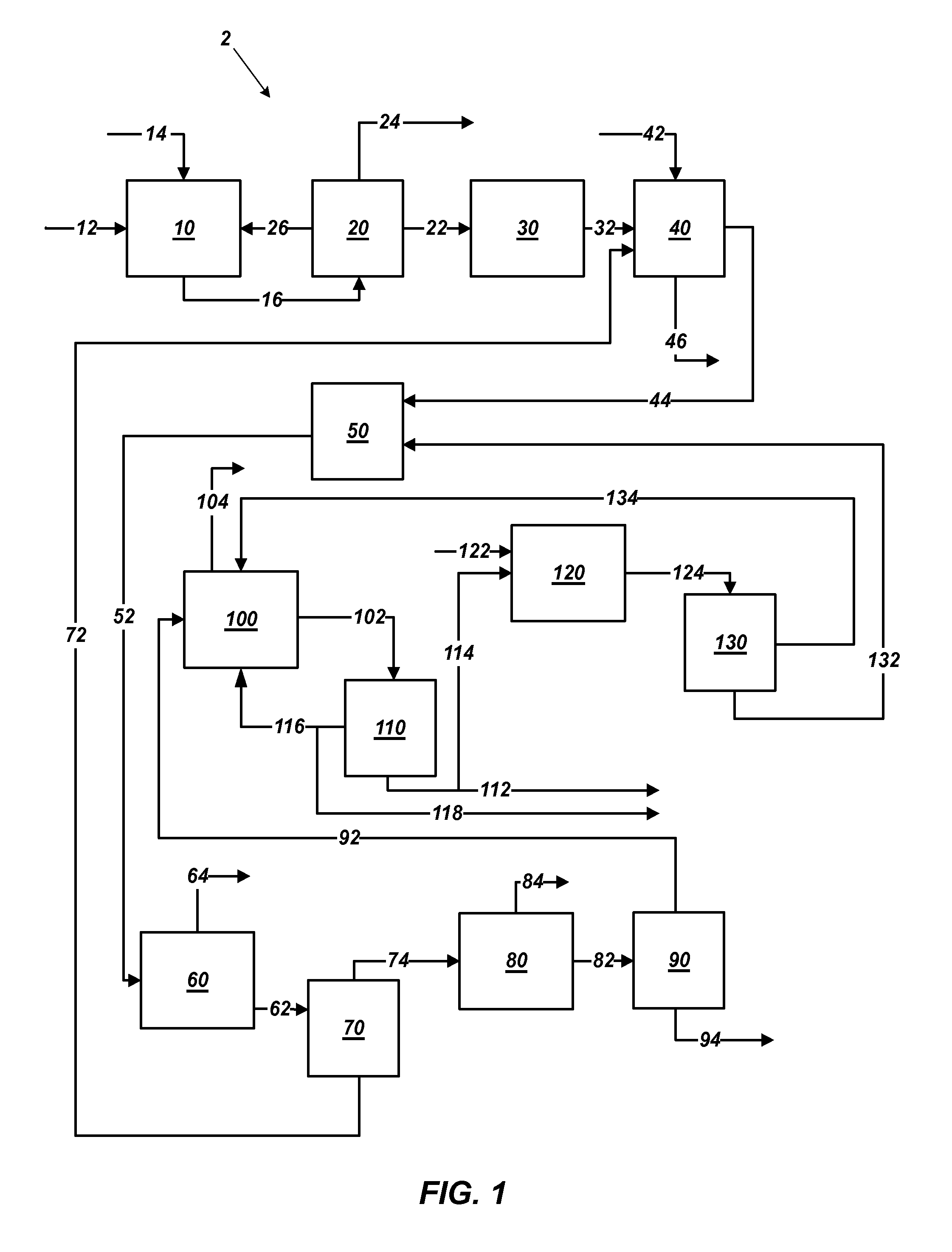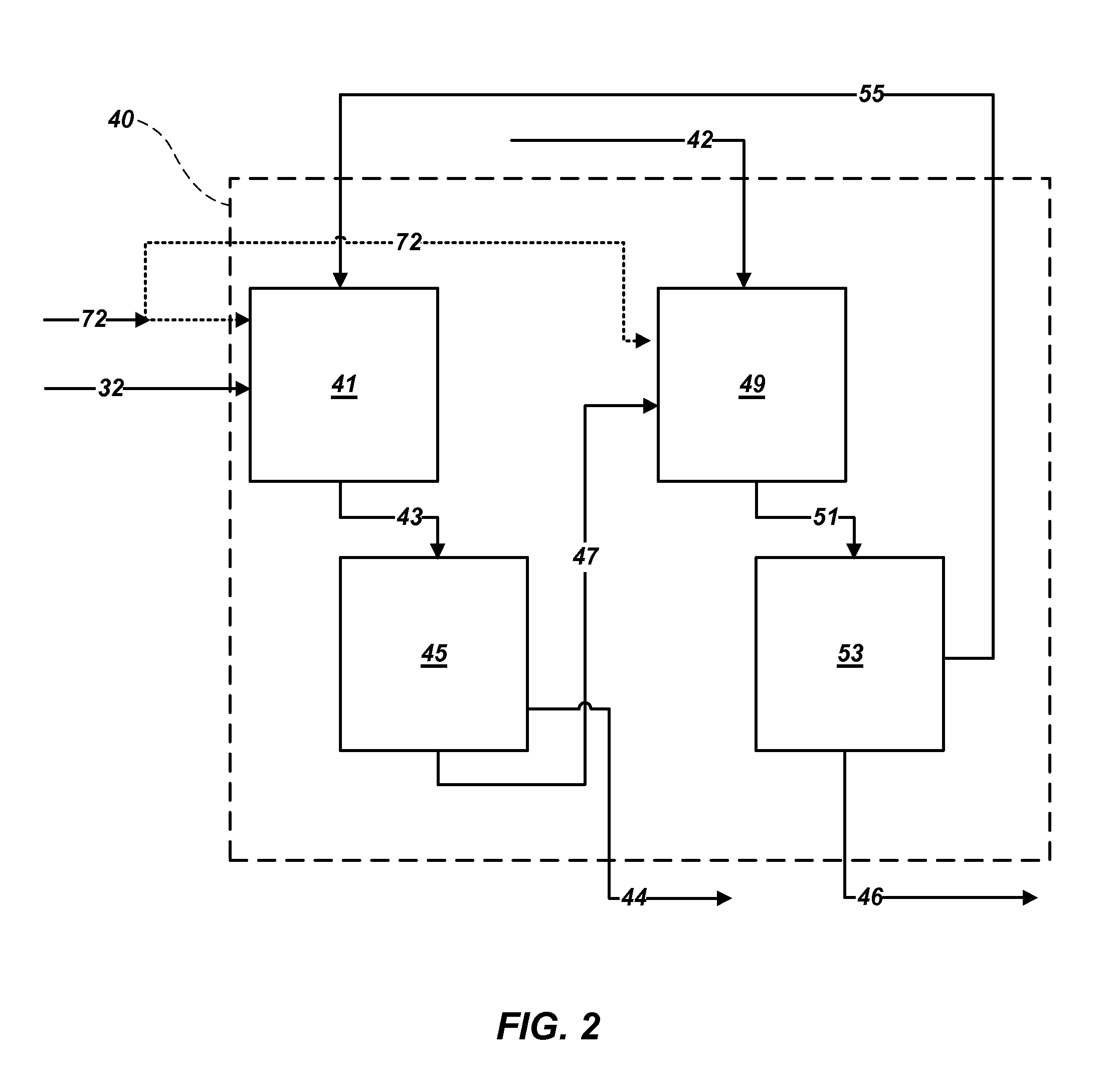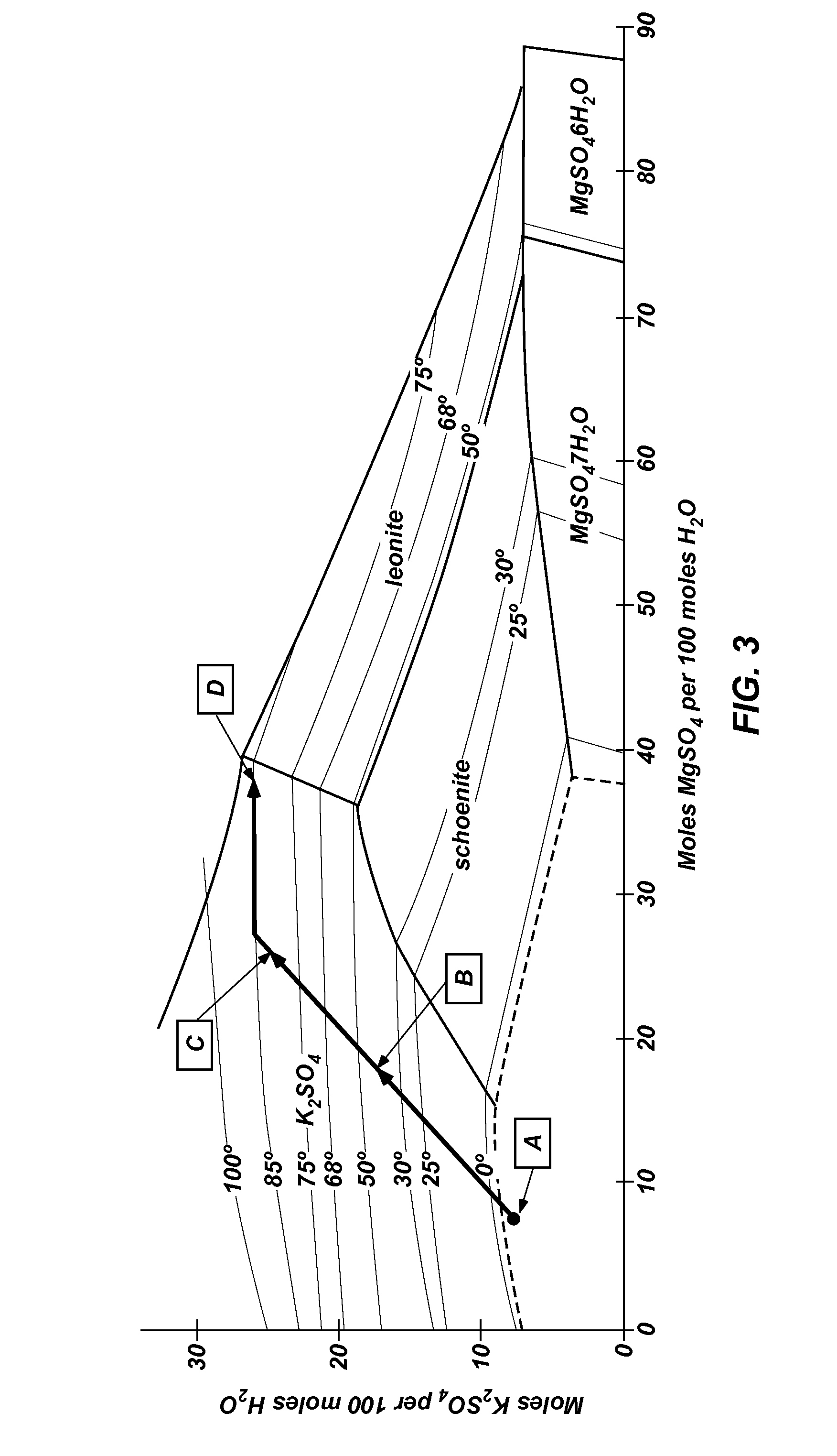Methods of processing polyhalite ore, methods of producing potassium sulfate, and related systems
a technology of polyhalite ore and potassium sulfate, which is applied in the direction of gas-gas reaction process, alkali metal carbonate, separation process, etc., can solve the problems of significant power and/or steam input, process limitations, and relatively slow dissolution
- Summary
- Abstract
- Description
- Claims
- Application Information
AI Technical Summary
Benefits of technology
Problems solved by technology
Method used
Image
Examples
example
Processing of Polyhalite Ore
[0034]Polyhalite ore is extracted from deposits in New Mexico's Permian Basin by conventional mining techniques. Polyhalite ore is reduced to a grain size smaller than about 1.0 inch (25.4 mm) in diameter in a pre-crusher, then ground in a wet rod mill or gage mill operating in closed circuit with brackish groundwater from the Capitan Reef. Approximately 15% of the ore passes through a Tyler Mesh #10 screen after one pass through the mill; the remainder of the ore is recycled through the mill until it passes through the screen. The ground ore is dewatered in a centrifuge, and the liquor is returned to the mill. A portion of the liquor is purged to control sodium chloride concentration in the mill. The wet ore is transferred to a calciner for thermal treatment. The wet ore is heated to a temperature of between about 480° C. and 520° C. for a time period from about 5 minutes to about 15 minutes to increase leachability. The calcined ore is then cooled and t...
PUM
| Property | Measurement | Unit |
|---|---|---|
| temperature | aaaaa | aaaaa |
| temperature | aaaaa | aaaaa |
| temperature | aaaaa | aaaaa |
Abstract
Description
Claims
Application Information
 Login to View More
Login to View More - R&D
- Intellectual Property
- Life Sciences
- Materials
- Tech Scout
- Unparalleled Data Quality
- Higher Quality Content
- 60% Fewer Hallucinations
Browse by: Latest US Patents, China's latest patents, Technical Efficacy Thesaurus, Application Domain, Technology Topic, Popular Technical Reports.
© 2025 PatSnap. All rights reserved.Legal|Privacy policy|Modern Slavery Act Transparency Statement|Sitemap|About US| Contact US: help@patsnap.com



